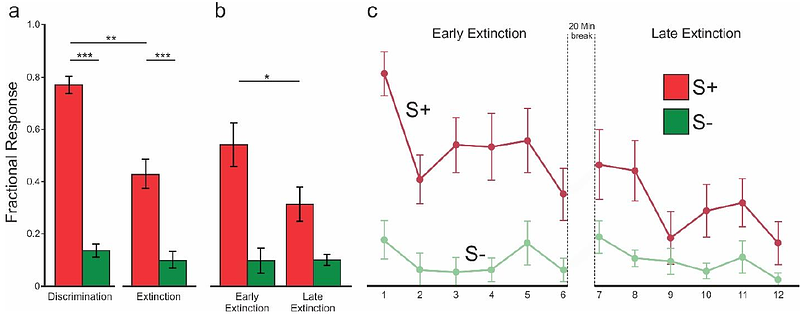Neural correlates of appetitive extinction learning: An fMRI study with actively participating pigeons

Neural correlates of appetitive extinction learning: An fMRI study with actively participating pigeons
Sadraee, A.; Helluy, X.; Genc, E.; Gao, M.; Behroozi, M.; Guentuerkuen, O.
AbstractExtinction learning is an important learning process that enables adaptive and flexible behavior. Human neuroimaging studies show that the neural basis of extinction learning consists of a neural network that includes the hippocampus, amygdala, and subcomponents of the prefrontal cortex, but also extends beyond them. The limitations of applying fMRI to actively participating animals have so far restricted the identification of the entire extinction network in non-human animals. Here, we present the first fMRI study of extinction in awake and actively participating pigeons, using a Go/NoGo operant paradigm with a water reward. Our study revealed an extensive and largely left hemispheric telencephalic network of sensory, limbic, executive, and motor areas that slowly ceased to be active during the process of extinction learning. We propose that the onset of extinction ignites a neuronal updating of the associated consequences of own actions within a large telencephalic neural network until a new association is established which inhibits the previously acquired operant response.